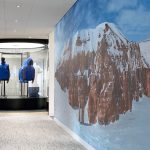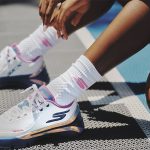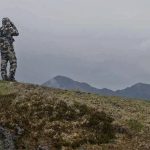When Roger Talermo joined Amer Group ten years ago he had a very clear and ambitious goal in mind for the company. He wanted it to become the largest sports equipment manufacturer, period. Shortly before Mr. Talermo took the reins at the Finland-based Amer, the company had acquired Wilson Sports (1987) and Atomic (1994) ski.
Over the years, he slowly built the company with organic growth and additional acquisitions. In 1997, the Amer Group declared that its main focus was on sporting goods. Shortly thereafter, the company acquired Suunto, DeMarini, and Precor. Talermo divested the groups tobacco business, a profitable business that was clearly counter-intuitive for a sporting goods company. Along the way Amer changed its name to Amer Sports and tucked in Volant skis, FPI fitness, and ATEC.
The company was clearly on its way to meeting Talermos vision, but it still had a long way to go with Shimano and adidas-Salomon leading the industry and K2 Inc. buying up brands like candy. On May 2, 2005 Amer acquired Salomon from the adidas-Salomon group, helping the company realize its goal.
While many in the industry suspected that adidas and Salomon would part eventually, the move by Talermo and Amer Sports changes the playing field of the global sporting goods marketplace in ways that will challenge a number of other brands and companies as the new entity starts to realize the benefits of the deal.
The acquisition boosts Amer Sports equipment business, but it also comes with some extras. Many analysts and armchair CEOs were wondering if this was a move by Amer to get into the apparel industry, but that notion was quickly dispelled by Mr. Talermo in a conversation last week with The B.O.S.S. Report.
Mr. Talermo gave BOSS the impression that, in spite of his soft-spoken manner, he clearly had his fingers on the pulse of every development in the company. He was able to shift gears from one division to the next without missing a beat, explaining strategic vision, new markets, new products, and future plans for every brand. With the acquisition only two weeks old, he was not yet comfortable with every brand under Salomon, but he had a working understanding and a preliminary vision for what they could do.
Most importantly, he emphasized that this was primarily an equipment acquisition for Amer Sports. The companys focus has always been on producing technical hardgoods, a focus that is not going to change any time soon.
“I dont think this will shift our major strategic outlook from that perspective because we will still be very focused on equipment; that is our core, said Talermo in his conversation with BOSS.
“We feel that we need to have one strong platform and build out from there. That platform is equipment. The bigger we get in equipment the harder it is to grow in that category. We have, in our internal projections, said for quite a few years that technical apparel and technical footwear could be interesting because the line between equipment and technical apparel is not very clear. It is still in an early stage, but we expect to see apparel to become, to some extent, intelligent.”
Mr. Talermo went on to explain that the Salomon opportunity gave them a natural way to reach their goal in equipment and at the same time diversify into the more technical end of apparel and footwear.
“The footwear market divides into two broad sectors the fashion footwear market like the great success of Puma in the past five years,” said Talermo. “And then, the real technical footwear which places a lot of emphasis on the R&D behind it and creates a real performance product. That is where I think we can have something to say and I think something can be done whether it is in the outdoor, hiking, climbing market or any other market where we can leverage the technology.”
While the blending of Amers equipment strategy with apparel comes naturally, extracting the Salomon businesses from the adidas-Salomon group may be the biggest challenge. The companies have been intertwined for eight years with joint projects, shared technologies, and most importantly a shared sourcing structure with many products from adidas and Salomon coming off of the same assembly lines.
Anyone attending Outdoor Retailer Winter Market could see the similarities in product and technology presented in the adidas and Salomon booths. Front and center in both locations was the new Ground Control System for trail running, and while the apparel technologies are not shared, the styling is remarkably similar across several of the brands.
Salomon North America chief James Curleigh told BOSS that the RD&D traffic ran both ways, with Salomons team responsible for much of the innovation that was based on the company's commitment to the adventure racing segment.
To help mitigate the issues with the dissection, adidas and Amer have signed a three year service agreement that covers all aspects of shared services between adidas and Salomon.
The sales organizations are also somewhat intertwined, especially in the bicycle business.
“Of course this is a delicate matter. We have to make sure that we dont lose anything and they dont lose anything. We have to be very careful here,” said Talermo. “Lets put it this way, it is a very broad servicing agreement that covers a lot of different fields. Primarily, it covers any fields that are currently integrated.”
Still, Talermos biggest challenge will be separating the Salomon sourcing structure from its parent and integrating it into Amers operations.
Amer has very little experience with the large textile, footwear, and apparel manufacturers in the Far East and the company will likely be relying on the team from Salomon to make this transition.
“It is evident that the whole sourcing structure is a big issue, particularly the whole Salomon shoe and apparel have been sourced through the adidas-Salomon sourcing organization, and that is something we will have to look at very carefully,” he said. “On the Amer Sports side we have a sourcing organization based in our headquarters in Taiwan with over 100 people on staff. This is also something we have to be very careful about. We have to strengthen our worldwide sourcing organization, particularly the part which is in Asia, and I think it will be a very natural flow for the Salomon organization. We have two or three years in which to make it work in the best possible way.”
While Mr. Talermo treads lightly while talking about the challenges he faces with this acquisition, he becomes animated when looking forward at the opportunities it presents. His vision for the company – concerning both geographical expansion and product development – is clear, and backed with information, real-world observations, and experience.
One of the categories he is most excited about is the newly acquired Mavic bicycle accessories business. Mavic has operated under the adidas-Salomon organization for the past few years and is primarily known as a bicycle wheel company, supplying equipment for several medalists in the Athens Olympics.
Today, there is some real competition in the bicycle component market, with two big entrenched international players in Shimano and Campagnolo and the upstart, SRAM, fighting its way into the marketplace in North America and Europe.
Talermo sees a window of opportunity here.
While the pane is still not clear, Talermo has correctly identified that consumers see value in the components on a bicycle, not necessarily in the bicycle itself. With the presence Mavic has in high-end wheels, and the weight of the brand name, it is only natural to envision extending the company into other components.
“The bike business, the profitability of the business of actually assembling completed bikes, has not been very good,” he said. “The value has been in components – both to bike manufacturers and to the consumers who buy the components. We have a lot of opportunities there in the future. As we get a little bit down the road here, and get a clearer strategic outlook, and have an opportunity to talk some more with the people at Mavic, I think that category has many possibilities. Right now, they are a very small player in a very big market.”
Another area where Talermo sees opportunity is electronics. While the Salomon acquisition did not necessarily address this aspect of Amers business, there is little doubt that the newly acquired brands will benefit very soon from the possibilities that the merger of equipment and electronics provide for the end user.
Suunto is Amers primary electronics brand, but this technology is creeping into every corner of Amers product lines. Consumers will see the same radio-frequency technology that allows Suuntos heart-rate monitors to communicate with its wrist-top computers in Atomics ski bindings allowing the heel piece to communicate with the toe-piece, and in Precors fitness machines allowing different workout stations to communicate with each other and connecting the user to the equipment in new and beneficial ways.
Talermo sees this dependence on technology in hardgoods growing into apparel. Already solar-panels are being integrated into backpacks and jackets, allowing light weight, remote access to battery chargers for any type of electronics. Some apparel companies have designed jackets with heating elements built into the product. Running shoes have computer chips.
“We strongly believe my vision has been very clear on this. As mechanical products become more electronic they can be more customized. It appears we are the only equipment company in the world today that has mastered both mechanical and electronic engineering,” Talermo said. “We have a lot of projects going on. Which of them will fly is yet to be seen.”
Geographically, Amer is keeping a close eye on China, just like every other consumer-oriented company in the world. Talermo is very careful and very methodical about Amers expansion in this region. All of the companys product categories are represented in the Chinese marketplace, but Amer has held off on any major push at expansion in the region. While everyone is clamoring to be the biggest and to be the first, Talermo feels that the majority of the Chinese economy is not ready for sporting goods equipment yet.
“We are not going to be too rushed there it is not going to open up tomorrow. I think it is gradually going to open up and as the infrastructure develops, as places to practice your sport begin to develop, then it will grow gradually,” Talermo said. “In the places where we have some visibility, the biggest opportunities in the short-term are tennis, the outdoor market, to some extent some team sports like basketball, and then mid term we see the winter sports coming up, but that is still quite regional and of course it goes without saying that badminton is very important in China.”
This is not to say that Amer is not active in China. The companys executive board of directors recently went on an extensive trip through China, visiting with the Chinese Olympic Committee and holding meetings with key officials for one full week. The company is also active with marketing and selling product to existing retail partners. However, Talermo says the country is not yet ready for a “major push.”
Instead, Amers more immediate growth opportunities lie to the northeast, in Japan. Talermo said that he expects Japan to be the largest Amer subsidiary within the year, apart from the United States. Talermo also identified Russia as an emerging market, but is in the same category as China.
From the perspective of Amers many brands, the SnowSports market has the highest density with Atomic, Volant, and now Salomon all chasing the same customers. Instead of creating a good-better-best tiered strategy, these brands will be positioned as dominant players in several different disciplines.
An executive from Salomon put it best when he recently told Talermo that Atomic dominates the front of the mountain with its racing skis while Salomon dominates the back end of the mountain with its backcountry and freeride skis. Talermo said that Volant will be positioned as a luxury brand with aesthetics and performance working hand-in-hand.
While the consumer brand positioning is important, the shared technologies are really the upside to this acquisition. Atomic runs the most profitable ski manufacturing facility in the world and bringing these technologies and processes to Salomons facility will transform the product. Likewise, Atomic can benefit from Salomons ski boot manufacturing technology and its cross-country norm systems. Salomons Curleigh said that the hardgoods sourcing capabilities of the Amer organization will be a big opportunity for the Salomon brand.
Geographically, the brands mesh well. Talermo said, “Salomon is geographically weak where we are strong in the sense that we dont see any markets where we will be so strong that we will have problems with the authorities. And therefore, it is a good situation from a geographic standpoint and from a product balance standpoint. With the new entries in the bicycle market and outdoor market we really see this as a good fit.”
Talermos main motivation behind this acquisition was expanding Amers equipment portfolio, particularly in SnowSports. This industry is rapidly going through a consolidation and it appears that only the largest, and most proactive multi-brand corporations will be left at the end of the day. With this move Amer has at least ensured that it will not become one of the casualties, but it is more than likely this will give them a shot at becoming the dominant player in the global sporting goods marketplace.














